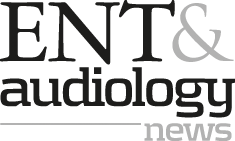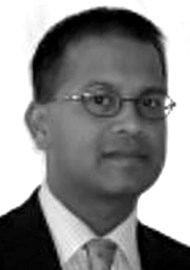In this useful and practical article, the authors describe their use of transnasal oesophagoscopy, including the range of clinical scenarios in which it is used.
What is TNO?
Transnasal oesphagoscopy (TNO) is a technique that can be used in the ENT outpatient setting which allows inspection and documentation of the appearances of the pharynx, larynx, oesophagus and stomach. The procedure takes approximately 10–15 minutes.
TNO forms part of our weekly specialist dysphagia management clinic. In our centre, patients are referred mainly from ENT colleagues; however, we accept interspeciality and tertiary referral. In general, a patient information leaflet is provided at the time of referral. Patients attend fasted and are advised to hold anticoagulation if there is an intention to biopsy.
"In our centre we have expanded our procedural capacity to include balloon dilatation of cricopharyngeus muscle, tracheoesophageal puncture and insertion of speech valve"
Indications for TNO are broadly diagnostic or therapeutic. Referral indications for diagnostic TNO in our unit are mostly for dysphagia, odynophagia, unresolved persistent throat symptoms despite optimum therapy, head and neck malignancy and haemoptysis. Similarly, if a patient has undergone CT or MRI which has highlighted an area of suspicion, TNO can be used to evaluate. Therapeutic indications tend toward instrumentation for biopsy, dilatation or removal of foreign body. Wider-ranging therapeutic indications include the passage of nasogastric (NG) feeding tubes and laser therapies. In our centre we have also expanded our procedural capacity to include balloon dilatation of cricopharyngeus muscle, tracheoesophageal puncture and insertion of speech valve.
Benefits of TNO
- Minimally invasive procedure
- Outpatient procedure, thus reducing healthcare costs
- Local anaesthetic only
- Sitting position
- Suitable for patients for whom general anaesthetic (GA) is high risk
- Short recovery period
- Options for same-day intervention
- Highly efficient pathway – shorter waiting list than for oesophago-gastro-duodenoscopy (OGD)
Patient selection
The benefit of TNO in the outpatient setting is that it provides an alternative option for endoscopic evaluation in those who would otherwise be unsafe for a general anaesthetic. There are, however, rare occasions where the patient is unfit to proceed with TNO. Standard practice in our unit is for baseline observations to be taken on arrival and, if the patient has grossly abnormal observations, we would postpone the examination until this has been addressed.

Another consideration at the time of referral for TNO is whether the patient is anatomically suited to the procedure. Standard flexible nasendoscopy is 2.4 mm in diameter but for transnasal oesphagoscopy the diameter is more than double. This means that a patient with a nasal deviation or spur which makes flexible nasendoscopy difficult, may be precluded from TNO altogether, even with local anaesthetic. In this situation, the same endoscope can be used in a per oral approach.
Other relative contraindications would include a recent history of epistaxis, particularly when associated with a diagnosis such as hereditary hemorrhagic telangiectasia (HHT), severe gag-reflex or anxiety, frailty or cognitive impairment which could affect patient’s ability to cooperate during the procedure.
TNO equipment and setup
Our unit has a separate small theatre in the outpatient department which is where the TNO clinic takes place. If this was not available, TNO in a standard clinic room would be perfectly feasible. Two nurses are present to assist with the endoscopy, one patient-focused and one as an assistant.
"The benefit of TNO in the outpatient setting is that is provides an alternative option for endoscopic evaluation in those who would otherwise be unsafe for a general anaesthetic"
We use a lightweight, flexible transnasal endoscope (size 5.1mm) and videoscope system (both from Pentax Medical). The endoscope should have good angulation capabilities, water irrigation system, suction channel, side port for taking biopsies, and narrow-band imaging (NBI/I-scan). While this is being set up and checked, the patient is given adequate local anaesthetic in the form of co-phenylcaine (lidocaine hydrochloride 5% w/v and phenylephrine hydrochloride 0.5% w/v topical solution) to the nasal cavity. Optionally, in some centres, simethicone is used to improve visualisation of mucosal surfaces by reducing bubbles but this is not used as standard locally. The ‘sniff test’ can be used at this point to identify the more patent nasal cavity by asking the patient to inhale through one nostril while the other is sealed by the examiner’s index finger. The nostril through which air passes more freely is chosen. Additional local anaesthesia is given in the form of 4% xylocaine using the MADgic™ Laryngo-Tracheal Mucosal Atomization Device via oral cavity or epidural catheter through the side port of the transnasal endoscope.
Procedure
The patient is sat upright with a pillow to support their back. The transnasal endoscopy is then performed via the more patent nasal cavity. Checkpoints to consider systematically during this examination include nasopharynx, right and left base of tongue, vallecula, right and left glossotonsillar sulci (GTS), right and left piriform fossae, epiglottis, glottis, hypopharynx, cricopharyngeus, oesophagus, gastro-oesophageal junction (GEJ), stomach and retroflexion / J-manoeuvre to examine distal GEJ. Air must be used to insufflate the oesophagus at all times during intubation and extubation of the lumen to allow for adequate view. Withdrawing the endoscope is done in a cautious manner while continuing to examine these landmarks in reverse order.

Nasopharynx.

Epiglottis.

Vallecula epiglottis.

Valleculae.

Left glossotonsillar sulci.

Right glossotonsillar sulci.

Tongue base.

Gastroesophageal junction.

Pylorus.

Pylorus.
At the end of the procedure, air can be suctioned out of the stomach to improve patient comfort, although this is not standard practice. A video recording can be taken throughout the examination and is frequently done in our centre to allow better communication, explanation and understanding of normal anatomy or abnormal findings to the patient. Photographs can be taken and used for discussion in the head and neck multidisciplinary team (MDT) or for onward referral to UGI surgeons if required. Patients are reminded not to eat or drink until the local anaesthesia has worn off, and are able to leave thereafter if feeling well.
Checkpoints
- Nasopharynx
- Right and left base of tongue
- Valleculae
- Right and left glossotonsillar sulci
- Epiglottis
- Supraglottis / glottis / subglottis
- Hypopharynx and right and left piriform fossae
- Cricopharyngeus (during intubation and extubation)
- Oesophagus
- Gastro-oesophageal junction (GOJ)
- Stomach (pylorus, floor of fundus)
- Retroflexion / J-manoeuvre to examine gastric aspect of the cardiac sphincter
Opportunities for teaching
In our unit, TNO exposure forms part of the laryngology curriculum which all trainees are exposed to as they rotate training placements. Initially, trainees are encouraged to observe 20 TNOs to highlight the practicalities and techniques and, after a period of observing and assisting, can perform 20 endoscopies under close supervision. Ultimately, the aim is that the trainee can perform the TNO with hands-off supervision from the consultant. We recommend establishing a local MDT setup with upper GI physicians and surgeons to support this process.
Decalration of competing interests: None declared.







